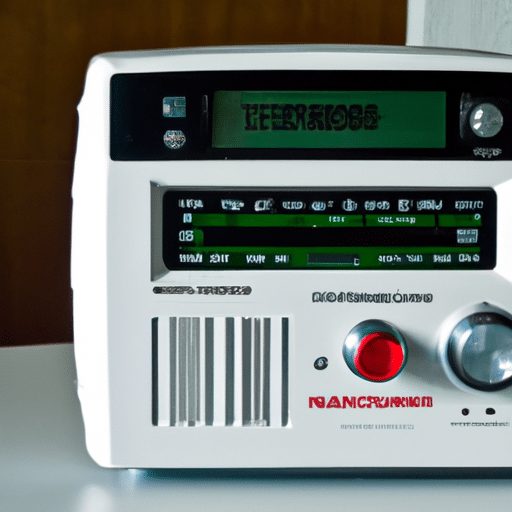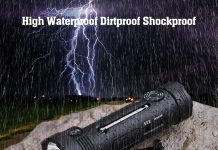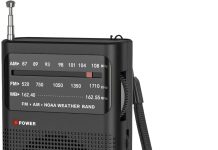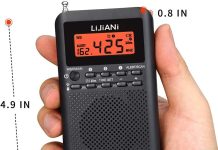Let’s talk about the importance of testing your emergency weather radio regularly. We all know that these devices are designed to keep us safe during severe weather emergencies, but do we really know how often we should be testing them? In this article, we will discuss the recommended frequency for testing your emergency weather radio and why it is crucial to do so. So, grab a cup of coffee and let’s get started!
Review contents
Importance of Testing Emergency Weather Radio
Ensuring Functionality
When it comes to emergency situations, having a fully functional weather radio can make a world of difference. It is essential to test your emergency weather radio regularly to ensure that it will work when you need it the most. By testing the functionality of your weather radio, you can have peace of mind knowing that it will provide accurate weather alerts and updates during severe weather events.
Staying Updated with Technology
Technology is constantly evolving, and emergency weather radios are no exception. By regularly testing your weather radio, you can stay updated with the latest features and advancements in technology. This ensures that you have access to the most reliable and efficient tools for receiving weather alerts. Don’t be left behind with an outdated device when a newer model could provide you with improved functionality and possibly even save your life.
Preparing for Unexpected Situations
Weather emergencies can strike at any moment, and being prepared is crucial. Testing your emergency weather radio allows you to familiarize yourself with its functions and operation, ensuring that you will be prepared to use it effectively in an emergency. By conducting regular tests, you can also identify any potential issues or malfunctions beforehand, giving you the opportunity to address them and be fully prepared when disaster strikes.
Factors to Consider when Testing
Type of Weather Radio
The first factor to consider when testing your emergency weather radio is the type of radio you have. There are several types available, such as handheld radios, desktop radios, and even weather radios integrated into other electronic devices. Each type of weather radio may have specific testing requirements and procedures, so it is important to refer to the manufacturer’s instructions for the best testing practices.
Manufacturer’s Recommendations
Manufacturers often provide guidelines and recommendations for testing their specific models of weather radios. It is important to follow these instructions to ensure that you are testing your radio correctly and effectively. The manufacturer’s recommendations may include specific testing frequencies, testing procedures, and troubleshooting tips. By adhering to these guidelines, you can guarantee the optimal performance of your emergency weather radio.
Severe Weather Patterns in the Area
Another crucial factor to consider when testing your emergency weather radio is the severe weather patterns in your area. Different regions experience varying degrees of severe weather, including thunderstorms, hurricanes, tornadoes, and blizzards. It is important to be aware of the types of weather events that are common in your area and test your weather radio accordingly. By testing your radio during the appropriate weather conditions, you can ensure that it is fully prepared to provide you with accurate and timely alerts.
Recommended Testing Frequency
Weekly Testing
It is generally recommended to test your emergency weather radio on a weekly basis. Weekly testing allows you to stay familiar with the operation of the radio and its features. By incorporating this regular testing into your routine, you can ensure that your weather radio is always functional and ready to provide you with the latest weather updates. Additionally, weekly testing can help identify any potential issues or deficiencies in the radio’s performance, allowing you to address them promptly.
Monthly Testing
In addition to weekly testing, monthly testing is another recommended practice for maintaining the functionality of your emergency weather radio. Monthly testing provides a more comprehensive assessment of the radio’s performance over an extended period. It also allows you to ensure that the radio is functioning properly during different weather conditions, including both calm and severe weather. By conducting monthly tests, you can verify that your weather radio is consistently reliable and ready for any situation.
Seasonal Testing
In certain regions with distinct seasonal weather patterns, it is advisable to perform seasonal tests. These tests should be carried out before the arrival of the severe weather season to ensure that your emergency weather radio is in optimal condition. Seasonal testing allows you to address any potential issues that may have arisen since the last test and make any necessary adjustments or repairs. This preparatory testing ensures that your weather radio will accurately detect and alert you to severe weather events.
Testing Procedures
Checking Battery Power
One of the most critical aspects of testing your emergency weather radio is checking the battery power. Ensure that the batteries are fully charged or replaced with new ones. It is recommended to use high-quality batteries to maximize the lifespan of your weather radio. Regularly checking the battery power ensures that your radio will function when power outages or other emergencies occur. Remember to also test the backup battery (if applicable) to ensure it is functioning correctly.
Verifying Reception
To test the reception of your emergency weather radio, tune it to a local weather station or the designated NOAA (National Oceanic and Atmospheric Administration) weather channel. Take note of how clear the reception is, as well as any interference or static. You should be able to hear the weather updates and alerts clearly. If the reception is poor, consider relocating the radio to a position with better reception, or evaluate the need for an external antenna to improve reception.
Testing Alert System
The alert system of your emergency weather radio is a vital component, as it ensures you receive timely alerts about severe weather events. To test the alert system, activate the alert feature on your weather radio and check if the alarm or notification sounds correctly. Some radios may have visual indicators, such as flashing lights, to accompany the alert. By testing the alert system regularly, you can confirm that it is functioning correctly and will effectively notify you of impending severe weather.
Maintaining and Troubleshooting
Regular Battery Maintenance
To maintain the performance of your emergency weather radio, regular battery maintenance is crucial. This includes checking the battery power levels regularly and replacing them as needed. It is recommended to store extra batteries in case of emergencies. Additionally, clean the battery contacts regularly to ensure a good connection and prevent corrosion. Neglecting battery maintenance can result in decreased performance or complete failure of your weather radio when you need it the most.
Updating Radio Software
Just like any electronic device, weather radios may require software updates from time to time. It is important to stay informed about any software updates provided by the manufacturer. These updates often include bug fixes, enhanced features, and improved performance. Regularly check the manufacturer’s website or subscribe to their newsletter for software updates and follow the instructions provided to keep your weather radio up to date.
Troubleshooting Common Issues
Sometimes, your emergency weather radio may encounter common issues that affect its functionality. Some of these issues may include distorted audio, intermittent reception, or difficulties in receiving alerts. When facing such issues, refer to the troubleshooting section of your weather radio’s user manual or contact the manufacturer’s customer support for guidance. Resolving common issues promptly ensures that your weather radio is always ready to serve its purpose.
Additional Considerations
Testing during Severe Weather Threats
While regular testing is important, it is also crucial to test your emergency weather radio during severe weather threats. When severe weather is imminent, it is advisable to perform a full system test. This includes checking battery power, reception, and the alert system to ensure that your weather radio is fully operational. By testing during severe weather threats, you can have confidence in your radio’s ability to provide accurate and timely alerts when it matters the most.
Guidelines for Travelers
If you frequently travel to different regions or go on outdoor adventures, it is essential to be prepared for sudden weather changes. Pack a portable weather radio that is suitable for travel, ensuring that it is fully charged or has fresh batteries. Familiarize yourself with the weather patterns of the area you are visiting and test the reception and alert system of your weather radio upon arrival. By following these guidelines, you can stay informed about potential weather hazards and take necessary precautions.
Backup Weather Alert Sources
While emergency weather radios are highly reliable, it is always a good idea to have backup weather alert sources. This can include smartphone apps, local news stations, or online weather services. By utilizing multiple sources for weather information, you can cross-reference alerts and ensure that you stay informed even if your weather radio experiences any technical difficulties. A combination of various weather alert sources provides an added layer of safety and preparedness.
In conclusion, testing your emergency weather radio is of utmost importance to ensure its functionality, stay updated with technology, and prepare for unexpected situations. Consider the type of weather radio you have, follow the manufacturer’s recommendations, and be aware of severe weather patterns in your area. Test your weather radio weekly, monthly, and seasonally to maintain its performance. Follow proper testing procedures such as checking battery power, verifying reception, and testing the alert system. Maintain and troubleshoot your weather radio through regular battery maintenance, software updates, and troubleshooting common issues. Finally, remember to test during severe weather threats, adhere to guidelines for travelers, and have backup weather alert sources. By taking these measures, you can be well-prepared and confident in the reliability of your emergency weather radio when it matters most. Stay safe and stay informed!



























